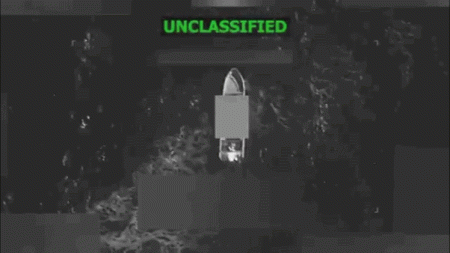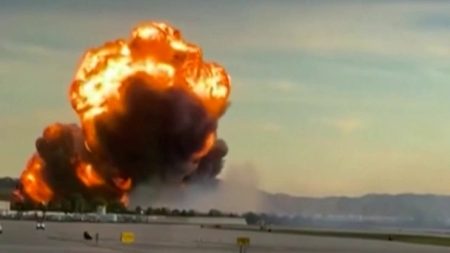Ukraine’s Strategic Drone Campaign Aims to Shift Russia’s Calculus Amid Battlefield Challenges
As Russian Advances Continue, Kyiv Leverages High-Tech Warfare to Alter Moscow’s Strategic Thinking
In the frozen trenches of eastern Ukraine, Russian forces continue their slow but methodical advance, capturing villages and strategic positions meter by meter. Meanwhile, hundreds of kilometers away, Ukrainian drones streak across the night sky toward oil refineries and military installations deep within Russian territory. This asymmetric response represents Ukraine’s bold attempt to change the strategic calculus of a conflict that has increasingly tilted in Moscow’s favor on the conventional battlefield.
Ukrainian military officials, speaking on condition of anonymity due to operational security concerns, describe their long-range drone campaign as more than mere tactical strikes. “These operations target the economic and military infrastructure that fuels Russia’s war machine,” explained one senior defense adviser in Kyiv. “When we strike oil refineries in Tuapse or military facilities in Bryansk, we’re sending a clear message that Russia’s interior is not immune from the consequences of this invasion.” The campaign represents a significant evolution in Ukraine’s defensive strategy as it grapples with diminishing artillery shells, delayed Western aid, and exhausted frontline units.
The sophisticated drone operations have successfully targeted at least two dozen Russian oil facilities since the beginning of the year, according to Ukrainian intelligence sources. These precision strikes have reportedly reduced Russia’s oil refining capacity by approximately 12% – a significant disruption to a crucial revenue stream funding the Kremlin’s war efforts. Western defense analysts note that while these strikes won’t immediately halt Russian advances in the Donbas region, they create strategic complications that President Vladimir Putin cannot easily dismiss. “Ukraine is effectively opening a new front without committing ground forces,” said Dr. Eliana Richardson, a military strategy expert at the Royal United Services Institute. “They’re forcing Russia to divert air defense systems from the frontlines to protect infrastructure hundreds of kilometers from Ukraine’s borders.”
The Psychological Dimension: Breaking Russia’s Sense of Security
The psychological impact of these operations extends beyond military considerations. For ordinary Russians in regions previously untouched by the conflict, air raid sirens and occasional explosions have become an unsettling reminder that the war Putin described as a “special military operation” has real consequences at home. “There’s a profound psychological dimension to this campaign,” noted Anton Barbashin, a political analyst focusing on Russian domestic politics. “When Russians in Rostov or Krasnodar see smoke rising from facilities they pass on their daily commutes, the war becomes tangible in ways state television can’t easily conceal.” This erosion of the sense of safety and normalcy represents a direct challenge to the Kremlin’s carefully constructed narrative that the war remains distant and controlled.
Ukrainian President Volodymyr Zelensky has carefully framed these operations as legitimate military actions targeting infrastructure directly supporting Russia’s war effort. “Ukraine defends itself with the tools available to us,” he stated in a recent address to the nation. “Every nation has the right to strike military targets that are used to launch attacks on its territory and citizens.” This positioning attempts to counter Russian characterizations of the drone campaign as “terrorist acts” while reinforcing Ukraine’s adherence to international norms despite the existential pressure it faces. Western allies have maintained a deliberately ambiguous stance regarding the drone strikes, neither condemning nor explicitly endorsing them, creating diplomatic space for Ukraine to continue the operations.
The technological achievement behind these strikes represents a remarkable story of innovation under extreme duress. Ukraine has rapidly developed an indigenous drone manufacturing capability that produces sophisticated unmanned aerial vehicles at a fraction of the cost of traditional military hardware. “What we’re seeing is a revolution in asymmetric warfare,” explained Colonel Mykola Danilyuk of Ukraine’s Strategic Communications Department. “Our engineers have created systems that can evade Russian electronic warfare and air defenses to strike targets previously considered secure.” This technological adaptation illustrates Ukraine’s agility in finding creative solutions to counter Russia’s overwhelming conventional military advantage.
Testing Putin’s Strategic Patience as International Support Fluctuates
For President Putin, the drone campaign creates a complex strategic dilemma. Responding with further escalation against Ukrainian civilian targets risks international condemnation and potentially deeper Western involvement, while failing to prevent the strikes undermines his promise to protect Russian territory. “Putin is caught in a difficult position,” observed Dr. Alexander Gabuev, Director of the Carnegie Russia Eurasia Center. “He can’t easily acknowledge these strikes are causing significant problems without appearing vulnerable, but the economic impact is becoming increasingly difficult to hide from the Russian public.” Some security analysts suggest the drone campaign may contribute to internal discussions within Russian elite circles about the sustainability of the current military approach.
The timing of Ukraine’s intensified drone strategy coincides with a period of uncertainty regarding Western support. With American aid temporarily stalled by political disputes and European countries struggling to scale up production of artillery shells, Ukraine has been forced to become more self-reliant and creative in its defense strategy. “The drone campaign demonstrates Ukraine’s determination to shape battlefield conditions despite resource constraints,” said Mykhailo Samus, Director of the New Geopolitics Research Network in Kyiv. “It also sends a message to Western partners that Ukraine will continue fighting effectively with whatever means available, making the best use of the support it receives.”
Balancing Tactical Gains with Strategic Aims in an Evolving Conflict
Despite the apparent success of the drone operations, Ukrainian officials remain clear-eyed about the broader strategic situation. Russian forces continue to make incremental gains in eastern Ukraine, particularly around the strategically important city of Chasiv Yar, where intense fighting has raged for weeks. “The drone strikes are important but not decisive on their own,” acknowledged a Ukrainian military commander who requested anonymity. “We need sustained Western support, particularly air defense systems and artillery, to truly change the situation on the ground.” This pragmatic assessment reflects Ukraine’s understanding that while the drone campaign creates valuable pressure points, conventional military capacity remains essential for defending territory.
The international legal implications of Ukraine’s drone strategy have sparked debate among experts in international humanitarian law. “These strikes appear to target legitimate military objectives under the laws of armed conflict,” explained Professor Marko Milanović from the University of Nottingham’s School of Law. “Oil refineries and fuel depots directly support military operations and therefore constitute valid targets, provided attacks are proportionate and distinguish between civilian and military infrastructure.” This legal framing helps Ukraine maintain the moral high ground while conducting operations that some Russian allies have criticized as escalatory.
Technological Innovation as Ukraine’s Asymmetric Advantage
The technical sophistication of Ukraine’s drone fleet has surprised many military observers. Using a combination of domestically produced airframes and navigation systems that can operate in GPS-denied environments, Ukrainian engineers have created platforms capable of evading Russian electronic warfare measures. “What makes these systems particularly effective is their relatively low cost and our ability to mass-produce them,” explained Oleksandr Kamyshin, Ukraine’s Minister for Strategic Industries. “We can lose several drones for each successful strike and still maintain a favorable cost-benefit ratio compared to traditional precision weapons.” This production capacity represents a significant achievement for Ukraine’s defense industrial base, which has expanded dramatically since the full-scale invasion began in 2022.
The drone operations have forced Russia to redeploy valuable air defense assets to protect facilities hundreds of kilometers from the Ukrainian border. “Every S-300 or S-400 system protecting an oil refinery in Rostov is one that can’t be used to shoot down HIMARS rockets at the front,” noted retired U.S. General Ben Hodges, former commander of U.S. Army Europe. “Ukraine is effectively forcing Russia to make difficult resource allocation decisions, which creates opportunities elsewhere.” This strategic dilemma compounds Russia’s existing challenges with troop rotation and equipment maintenance after more than two years of high-intensity conflict.
Seeking a Path to Negotiated Peace Through Position of Strength
Ukrainian officials consistently frame their military operations, including the drone campaign, as necessary steps toward achieving a just peace. “Ukraine wants peace more than anyone, but it must be based on international law and respect for our sovereignty,” stated Foreign Minister Dmytro Kuleba at a recent diplomatic forum. “Our actions aim to demonstrate to Moscow that continuing this war has costs that outweigh any potential benefits.” This messaging reflects Ukraine’s understanding that any future negotiations will be shaped by battlefield realities and that improving its strategic position remains essential for securing favorable terms.
As the war approaches its third year with no immediate end in sight, the drone campaign illustrates Ukraine’s remarkable adaptability in the face of overwhelming challenges. From a country that began the full-scale invasion with limited defensive capabilities, Ukraine has transformed into a nation capable of striking targets hundreds of kilometers inside Russia using domestically produced technology. “The story of Ukraine’s resistance is one of innovation and determination against seemingly impossible odds,” observed Timothy Snyder, historian and author of “The Road to Unfreedom.” “The drone campaign is just one example of how Ukraine continues to find ways to resist despite resource constraints that would have broken many other nations.”
The coming months will determine whether Ukraine’s strategic drone operations, combined with continued Western support and battlefield resistance, can meaningfully influence Moscow’s calculus. For now, as Russian forces advance meter by meter in eastern Ukraine, the fiery explosions at distant Russian oil refineries serve as powerful reminders that this war’s ultimate outcome remains uncertain, and Ukraine’s capacity to deliver unexpected consequences continues to shape this devastating conflict.








